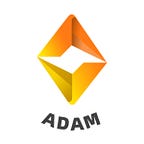ADAM May Become a Powerful Assistant for the Development of Commercial Banks
In the Global Banking Survey 2022 conducted by KPMG, 85% of the interviewed bank executives said that their banking institutions will offer digital wallets to their customers, and some commercial banks already offer banking services such as digital asset custody. On-chain data is the underlying element of digital assets. To sort, analyze, govern and manage it is the underlying logic for banks to carry out digital asset-related business.
On-chain data, has become one of the main tools for risk control of digital asset related business in banking industry. With the increase in the types of banking business, banks pay extra attention to the analysis and research of on-chain data and risk management process, especially preventive management.
For example, DBS Bank in Singapore currently has a digital transaction business, which provides services including transactions between four legal currencies and six mainstream digital assets, STO business and digital asset custody business. In terms of digital asset financial risk management process, which digital assets can be uploaded to the bank’s built-in trading platform and the follow-up risk tracking of the listed digital assets require experienced on-chain data security experts to analyze the on-chain data and provide professional technical monitoring for commercial banks. ADAM, the first Web 3.0-based data encryption computing network, is a powerful tool to help banks perform on-chain data analysis.
Decentralized Finance (DeFi) has also become one of the key directions for some countries and institutions to actively explore new finance for digital assets, which is based on blockchain smart contracts to perform various financial services. Although existing applications may not be suitable for mainstream financial institutions due to their open source and license-free nature, decentralized financial applications are entering the mainstream through the highly anticipated concept of “institutionalized DeFi”, and ADAM can also provide strong support in this direction. The core function of ADAM is on-chain data.
On-chain data, due to its abstraction and insufficient development, is ignored by many digital natives. In fact, extracting valid information from the blockchain network through on-chain data can give users extraordinary insights to capture industry dividends more effectively. Forward-looking technology giants not only took the lead in blockchain technology, some of them chose the data track to tap into its infinite potential. These companies specializing in on-chain data have achieved relatively high valuations, and some of them have already gone against the wind in a macro environment full of uncertainties.
Therefore, mining on-chain data is crucial to the development of emerging finance. Some may be concerned about the compliance of on-chain data. A special statement needs to be made here that the decentralization of on-chain data does not mean that there is no censorship and no licensing. On the contrary, the tracking, analysis and governance of on-chain data with licensing agreements can accelerate the embrace of new financial applications by national-level institutions.
In fact, global banks’ exploration of on-chain data and its underlying distributed technology can be traced back to the establishment of the R3 Global Blockchain Alliance in 2014.
Recently, some financial industry giants have also joined organizations such as the Ethereum Enterprise Alliance. From process optimization within banks, collaboration between banks, to the current exploration of inter-institutional decentralized finance, the practice of commercial banks never stops.
In the exploration of the banking industry for digital assets, it is not difficult to find that there are commonalities in technology, while there are different needs for different businesses, and industry standards in risk management and control continue to develop and mature. How to unleash the productivity of the new production factor of on-chain data in the midst of changes is something we need to explore with forward thinking for a long time.
In the field of digital asset compliance, commercial banks can currently adopt professional on-chain data service providers in the monitoring and risk management of digital assets For example, they conduct in-depth research and development with the efficient and accurate data services provided by ADAM, a data encryption computing network, and integrate big data and artificial intelligence technologies to further realize the popularization and commercialization of on-chain data.
The on-chain data service provided by ADAM is an expansion of the data element dimension that can provide commercial banks with a more secure data and database architecture and help them derive more efficient organizational and intra-architectural processes. We believe that the expansion of data elements and the formation of on-chain data marketplaces can give rise to new business models, such as institutional decentralized financial applications.In countries and regions where digital assets are compliant, on-chain data, a new productive element of the data market, is expected to achieve organic integration with the banking industry, moving from niche to mainstream in an open ending
